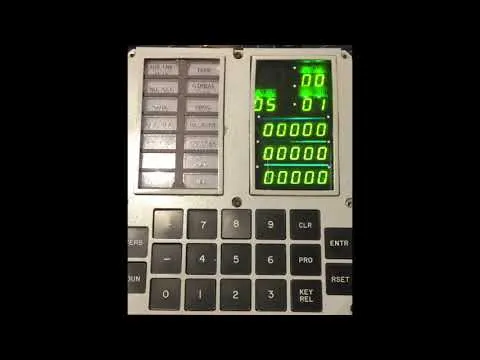
Ken Schiriff, a developer and fan of rarity computing technology, decided to restore the on-board control computer of Apollo spacecraft (AGC) - the same one that conducted the calculations and controlled the movement, navigation, as well as command and control modules of the lunar and command during flights under the same program NASA.
As Schiriff explains in his blog, he has the only AGC currently in operation that he has decided to use for Bitcoin mining. Processing the bitcoin hashing algorithm in assembler language by a 15-bit computer from the 60s is not an easy task, the developer notes.
AGC does not have a microprocessor because it was created long before they appeared. Thus, it is unlikely that it will be able to compete with more advanced models and add at least one block of Blockchain Bitcoin at all.
With a hash raid of 10.3 seconds, it will take a billion times as long to get one block of hash as the age of the universe," says Schiriff. - In any case, it's faster than minting manually or on punch cards. For comparison, the USB miner for $70 billion produces 130 billion hashes per second, specifies Motherboard.
In a separate video, Schiriff shows how the Bitcoin mining software works on AGC and displays the results on a display selected by the developer himself - no one has the original one.
"AGC takes 5.15 seconds for one SHA-256 hash. Since Bitcoin uses a double hash, the hash rate for mining is 10.3 seconds. Bitcoin currently produces about 65 EH/s (65 quintillion hashes per second). At the current level of complexity AGC will take an average of 4×10^23 seconds to find the block. Since the universe exists for 4.3×10^17 seconds, AGC will spend a billion times more time than the age of the universe to successfully extract the block," the author writes.